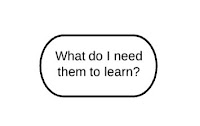Facilitating Design Experiences
Brad Griffith - September 16, 2016
For my first attempt at conducing a LEM session, I chose something I actually had to perform on the same day: presenting strategic development and planning sessions to a group of college administrators.
I sent out the following agenda to a few team members in advance of the meeting.
This had to be modified for my session because the attendees changed. You can see that this is a design session since I have not yet conducted one of these meetings.
For the meeting room, I arranged three movable dry erase boards in front of a horseshoe-shaped seating arrangement. I thought it would be great to have people facing one another to facilitate a more collaborative design experience.
I gave my attendees a copy of the agenda, LEM blocks to write on, a LEML framework guide, and writing utensils. They also received a document that I planned to circulate in my meeting because I wanted them to see what information would be given to the learners.
I began this meeting by giving a few details of why we were here and discussing the purpose, goals, and expectations of the strategy session proposal meetings I will hold with other departments. I even went as far as to have a board dedicated to the discover and understand phases.
This was a great discussion! We highlighted some of the goals and expectations of the meeting and found some trends that clarified some of the points that needed to be emphasized or streamlined during the presentation. I didn't want to get into the building blocks here yet and I think that served me well to keep the initial flow of brainstorming before trying to bring some structure to the conversation and ideas.
In the understand phase, I started asking questions about what we had written from the discover phase, illustrating along the way how some of the things we discussed fit into LEML. At this point, there's no arrangement of the blocks, but we did start with the evidence block first (people request the strategy session that I'm offering).
The discussion that arose after this was incredibly rich and helped me, as the facilitator of this environment, empathize with my learners (audience of administrators) in a different way. We had some challenging discussions of how my organization and this project are perceived and how we can make sure we are communicating the correct message in the correct way.
I feel lucky in that I quickly incorporated some of the feedback from my attendees into this learning environment and just a few hours later had to actually go out and make it happen! Having designed this learning environment beforehand in this way allowed me to have a confident and successful meeting. For the record, the evidence block here was absolutely achieved since I received an email request for getting started on a blended learning strategy session WHILE I was giving my presentation to the college administration!
Considering the close time-frame from the design of this learning environment to bringing to fruition,
I plan to hold another meeting with my attendees to conduct a diagnostic design experience for this learning environment. This is a simple model for the time being, but I think it could be analyzed in a more fine tuned way. I felt personally that I could incorporate more dialogue into the meeting. All of that considered, next time, I plan to do many things similar to how I conducted this session.























